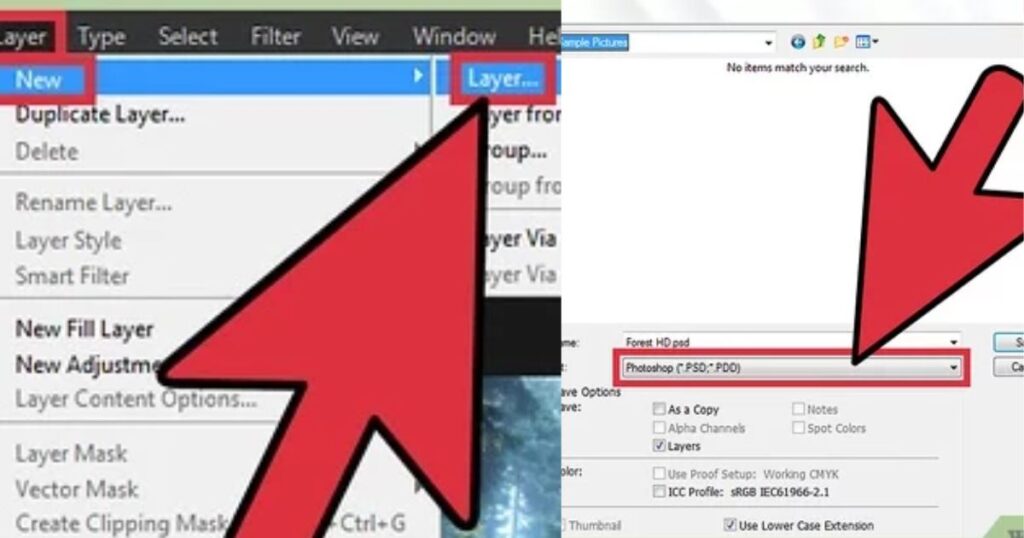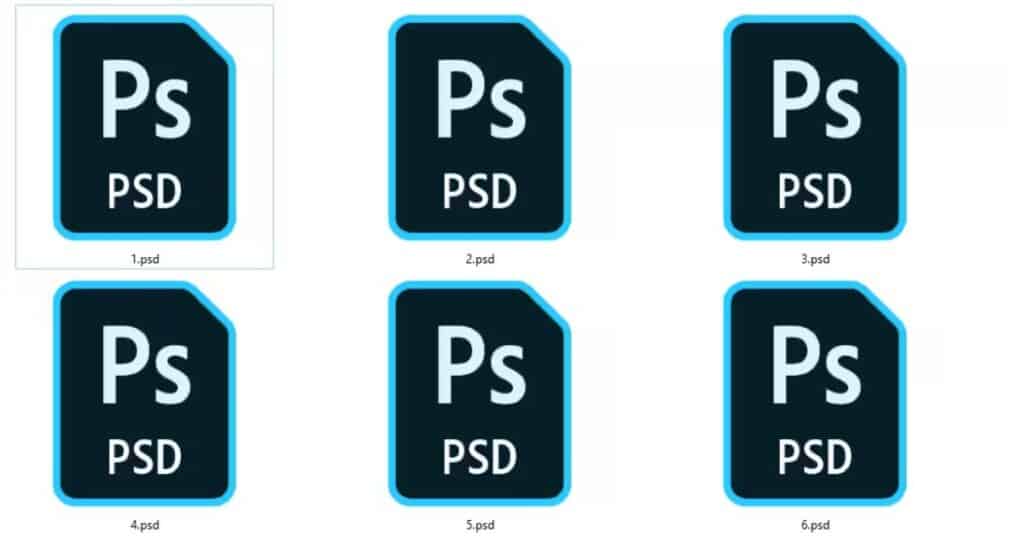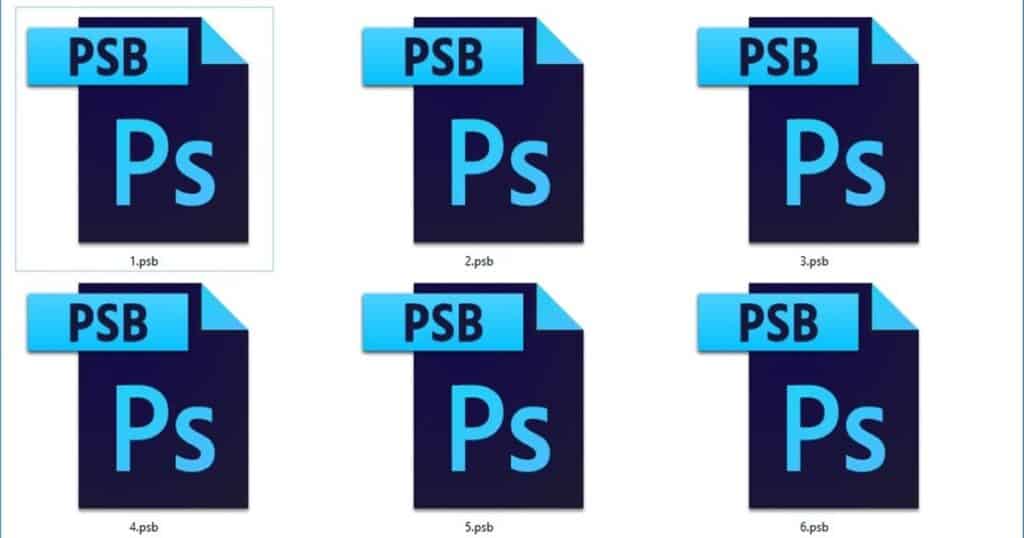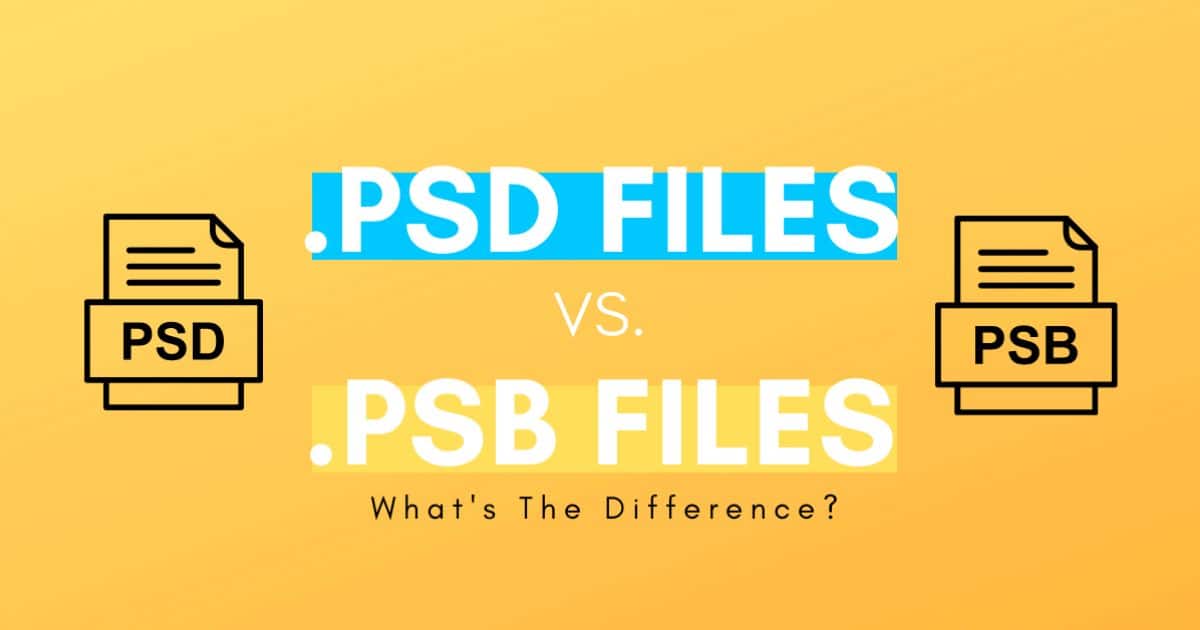Photoshop files come in different formats that serve different purposes. The two most common are PSD and PSB files. PSD stands for Photoshop Document and uses the .psd file extension. PSB refers to Photoshop Big and uses the .psb extension. While they are both Photoshop files, PSD and PSB formats have some key differences. This article will compare PSD vs PSB – examining what each format is, who uses them, and when you should use one over the other.
Understanding the File Extension – PSD & PSB
In Photoshop, you can save your work in different file types depending on your needs.
PSD stands for Photoshop Document and is the default file format for saving Photoshop files. PSD files use the .psd file extension.
PSB stands for Photoshop Big. PSB files use the .psb file extension and were introduced in Photoshop CS.
The .psd vs .psb extensions signal key differences in capabilities between the two file formats. PSD is limited to 2GB in size, while PSB can support much larger file sizes.
What is a PSD File and How Can You Create It In Photoshop?

A PSD file is the standard Photoshop Document format that saves all Photoshop data in a single file.
To create a PSD in Photoshop:
1. Open a new document or open an existing file you want to save.
2. Go to File > Save As.
3. Select Photoshop from the “Format” dropdown menu.
4. Enter a filename and set location.
5. Hit Save.
This will save your working Photoshop file as a .psd document. All layers, adjustments, masks, shapes, etc will be preserved in the PSD file.
What is a PSB File and How Does It Vary From A PSD?

A PSB file is a Photoshop Big document. It has all the same capabilities as a PSD file, but with support for much larger file sizes.
The key differences between PSD vs PSB include:
- File size limit – PSD 2GB, PSB 4EB
- PSB supports larger dimensions up to 300,000 pixels. PSD limited to 30,000 pixels.
- PSB can save more channels and layers than PSD.
PSB was introduced for photographers, designers, and other creatives working with very large high-resolution files. The PSD format caps out at 2GB and 30,000 pixels per side. The PSB format far exceeds those limits.
Benefits of Working with Both Formats
PSD and PSB both have distinct advantages:
PSD Benefits:
- More compatible – can be opened in older versions of Photoshop.
- Smaller file size makes it faster to open, save, and transfer.
PSB Benefits:
- Supports much larger images.
- Preserves more layers, channels, etc on complex files.
- Allows non-destructive editing on massive high-res images.
Deciding between PDF and PNG hinges on your project size and requirements. PSD suits smaller tasks, and PSB facilitates extensive editing on massive files. Wondering about Photoshop projects? Learn ‘How To Delete Photoshop Projects?‘ for efficient management.
Tips for Converting Between the Two Formats
You can quickly convert PSD to PSB or vice versa:
PSD to PSB:
- Open PSD file.
- Go to File > Save As.
- Select Photoshop Big from the Format dropdown.
- Click Save.
PSB to PSD:
- Open your PSB file.
- Go to File > Save As.
- Choose Photoshop from Format.
- Hit Save.
When going from PSB to PSD, some data may be discarded if the PSD format can’t support the image size or complexity.
Comparing Workflow Benefits in Each Format
PSD and PSB Photoshop files integrate into creative workflows in slightly different ways:
PSD workflow:
- Great for standard design tasks
- Easy to share and collaborate on
- Fast saving makes quick edits and iterations easy
- Compatible with printing
PSB workflow:
- Enables massive high-res photo edits
- Preserves intricate layers/channels on complex files
- Allows giant documents with minimal slowdowns
- Optimized for extensive retouching
- Maintains non-destructive editing flexibility
What is a PSD File?

A PSD file is Photoshop’s native file format for saving Photoshop Documents. It contains all elements of a Photoshop project in a single file with layers intact. This allows non-destructive editing, as modifications are saved to layers rather than baked into the image.
Key attributes of PSD files:
- Retains layers, adjustments, masks, etc.
- Supports most Photoshop features
- Maximum size of 2GB
- RGB/CMYK/grayscale color modes
- Allows saving in various bit depths
- Widely compatible with Photoshop and apps.
PSD is the standard format for Photoshop work before exporting final assets. It provides full editing flexibility.
Who Uses PSD File?
PSD files are used primarily by:
- Graphic designers – to maintain access to layers while designing.
- Photographers – for photo retouching and manipulation.
- Artists/Illustrators – who leverage Photoshop’s tools.
- Web/App developers – to export specific assets.
- Anyone needing to move Photoshop work between apps.
The PSD format is so ubiquitous in part because it preserves Photoshop data for continued editing.
What is the Advantage of the PSD File Format?
The advantages of working with PSD files include:
- Preserves all Photoshop data like layers, adjustments, etc. This enables non-destructive editing.
- Allows app-specific features like layer comps and notes to be saved.
- Retains editable text and vector elements.
- Smaller size than uncompressed formats makes workflow fast.
- Wide compatibility with Photoshop and other software.
- Serves as primary working file before exporting assets.
For Photoshop work, PSD provides full fidelity saving while remaining efficient.
What is a PSB File?

A PSB file is a Photoshop Big document. PSB was designed to allow Photoshop projects with much larger sizes, dimensions, and complexity than the standard PSD format.
Specifications of PSB files include:
- 4 exabyte maximum file size
- Up to 300,000 pixels per dimension
- More possible layers and channels
- Saves all Photoshop data just like PSD
- Uses .psb file extension
PSB provides essentially unlimited resolution and image detail compared to PSD.
What is the Advantage of the PSB File Format?
The PSB file format has several key advantages:
- Supports massive file sizes up to 4EB for enormous projects.
- Allows documents with dimensions up to 300,000 pixels for ultra-high resolution.
- Preserves many more layers, channels, etc for intricate files.
- Enables non-destructive editing on gigantic photomontages and panoramas.
- Saves complete Photoshop data and capabilities beyond PSD limits.
For high-end design and photography, PSB enables Photoshop’s full power to be leveraged on extremely large and complex images.
Who Uses PSB Files?
PSB files are primarily used by:
- Photographers – for ultra high-res landscape, architectural, or panoramic photos.
- Designers – creating enormous concept art, entertainment assets, etc.
- Visual effects artists – for CGI compositing and matte paintings.
- Scientists/researchers – examining massive high-res microscopy or telemetry images.
- Advertisers – developing giant photomontage brand imagery and signage.
Essentially anyone needing to edit truly enormous and intricate images beyond PSD’s limits can benefit from the PSB format.
Saving Your Photoshop Work in PSB or PSD Format

When saving Photoshop work, consider:
- PSD for smaller projects focused on design and photo editing. Provides broad compatibility.
- PSB for giant or complex documents that demand high resolution and layer capacity.
Many artists use PSD as their standard working format, and PSB for specific large assets needed at higher resolution or with more editing complexity preserved.
FAQ’s
How to open a psb file in photoshop?
To open a PSB file in Photoshop, simply go to File > Open and navigate to the .psb file. Photoshop will launch the PSB document just like any other Photoshop file. No special steps are required to open or edit PSB files.
What is the difference between PSB and PSD in Photoshop?
The main differences between PSB and PSD in Photoshop are:
- PSB allows much larger file sizes, up to 4 exabytes compared to 2GB for PSD.
- PSB supports dimensions up to 300,000 pixels per side, PSD only 30,000 pixels.
- PSB can preserve many more layers and channels than PSD.
- PSB enables working with massive high resolution files beyond PSD’s limits.
how to convert psb to psd in photoshop?
Converting PSB to PSD in Photoshop is simple:
1. Open the PSB file in Photoshop.
2. Go to File > Save As.
3. In the Save As dialog, choose “Photoshop” from the Format dropdown.
4. Enter a file name for the PSD and click Save.
Photoshop will save a copy of the PSB file in the PSD format. Some data loss may occur if the PSB contains image details beyond PSD’s limits.
What is the difference between Photoshop and PSD?
The key differences between Photoshop and PSD are:
- Photoshop is image editing software from Adobe.
- PSD is a file format that stands for Photoshop Document.
Photoshop is the program used for creating and manipulating images. PSD is the native file format that Photoshop uses to save multilayer image documents.
What are the 2 differences between a JPG and PSD?
Here are 2 key differences between JPG and PSD files:
1. PSD files preserve all Photoshop image layers and edits, while JPG is a flattened final image format.
2. PSD is lossless and retains full image quality, whereas JPG uses lossy compression that can degrade image detail.
Conclusion
PSD and PSB are two formats that serve different purposes in Photoshop workflows. PSD provides broad compatibility and support for common image editing tasks. PSB enables working with massive high-resolution files while preserving intricate layering and adjustments. Knowing when to use each format allows creatives to get the most out of Photoshop’s capabilities.
